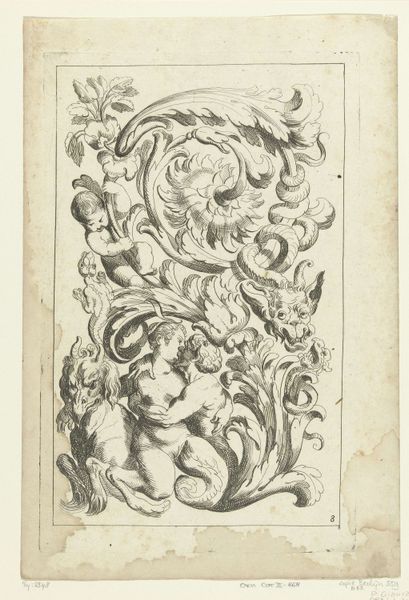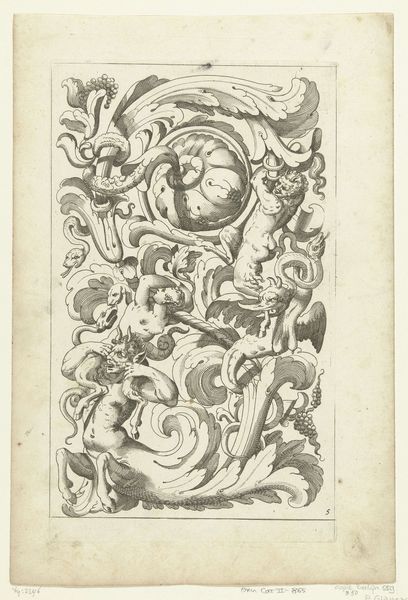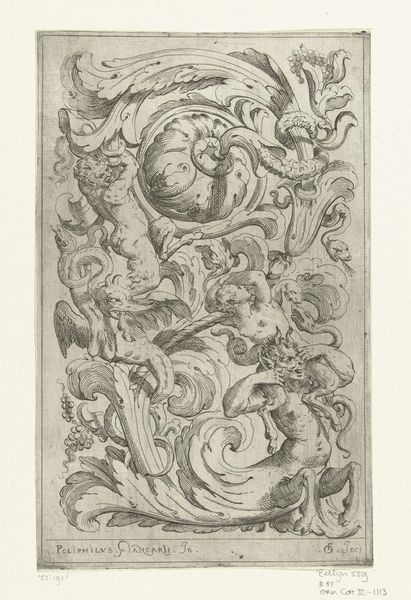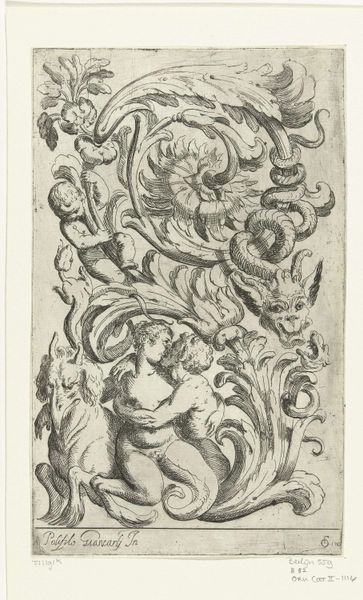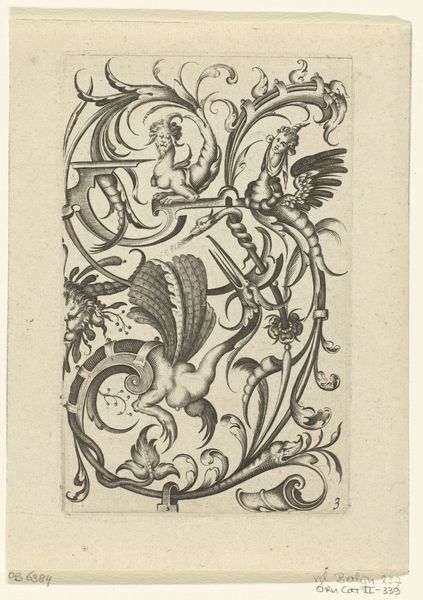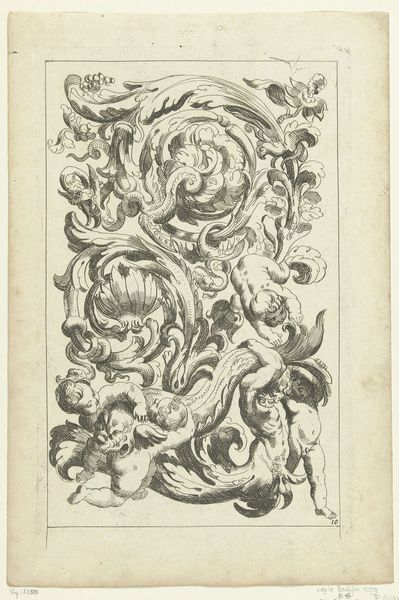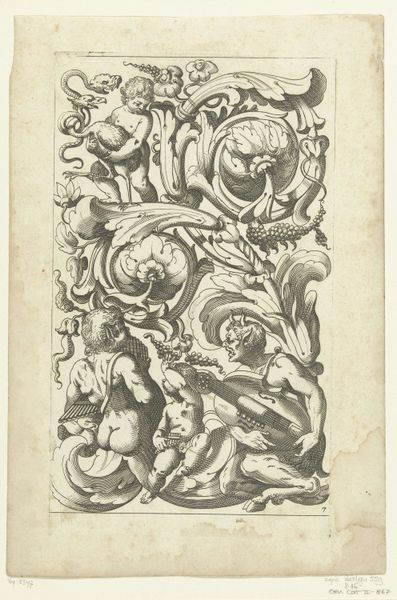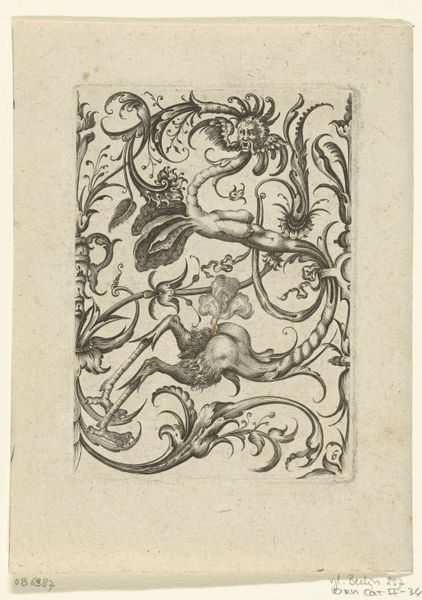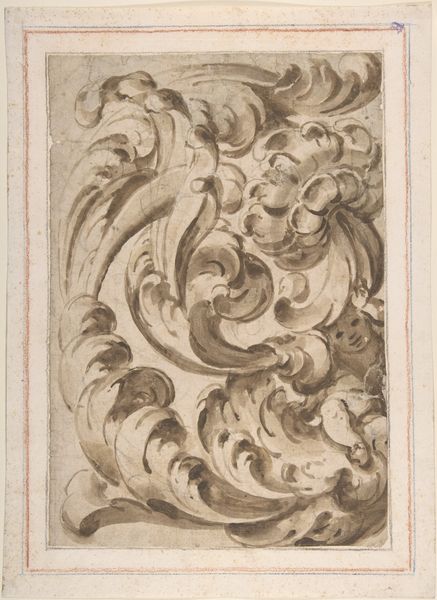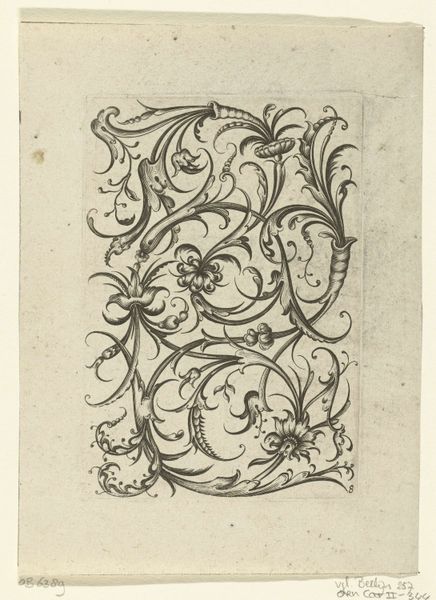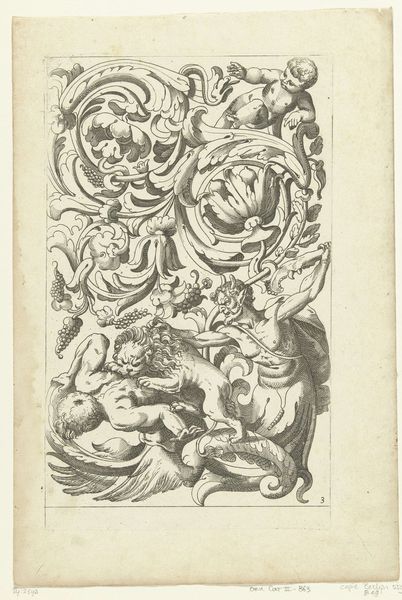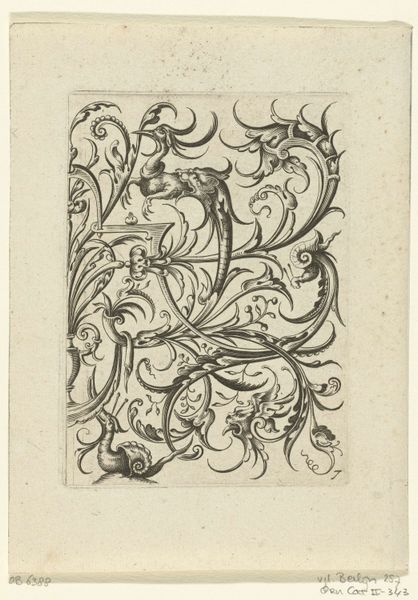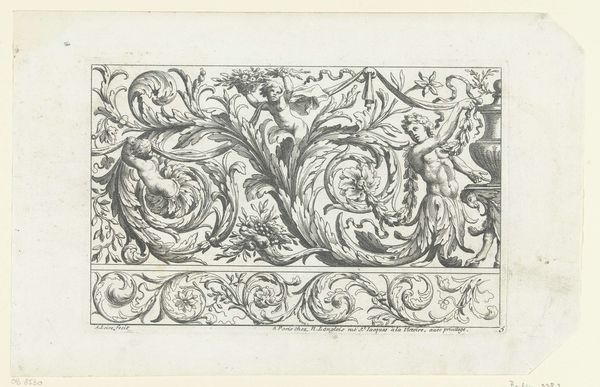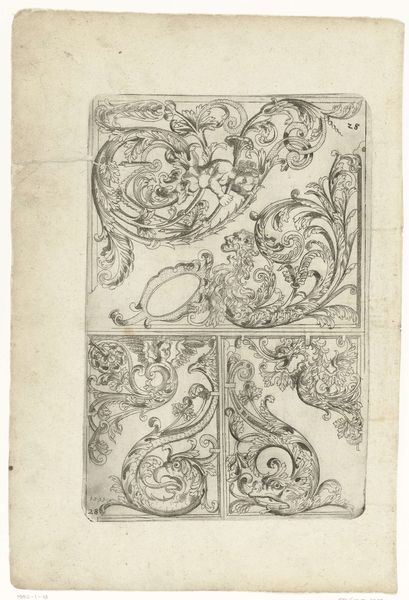
drawing, etching
#
drawing
#
allegory
#
baroque
#
etching
#
figuration
#
decorative-art
Dimensions: height 245 mm, width 153 mm
Copyright: Rijks Museum: Open Domain
Editor: This etching, "Triton sitting on a monster underneath," from around 1655-1657, presents a real sense of dynamic energy with these figures tumbling amidst elaborate foliage. It seems meant to decorate something, maybe furniture? What catches your eye about it? Curator: Well, considering its historical context, this print reveals the burgeoning market for decorative arts and the role prints played in disseminating stylistic trends. Etchings like this, mass-produced and relatively inexpensive, served as pattern books. This provided artisans—furniture makers, plasterers—access to the latest Baroque designs. How do you see its allegorical elements working within this framework? Editor: I guess they're like a visual shortcut to grandeur and sophistication? I mean, we see Triton, mythical sea god, and putti—cherubic figures often used to convey innocence and divinity—all interwoven within this very controlled composition. Do you think the subject matter made it appeal to a specific social class? Curator: Definitely. The mythological allusions catered to the learned elite. By incorporating such imagery, even mundane objects gained an aura of classical erudition. It was a form of social aspiration, made accessible through print culture. Did the composition's dense, almost overwhelming detail strike you? Editor: Yeah, it's kind of chaotic, almost fighting for space, but I guess that’s part of the Baroque style. It makes me think about power, how those in charge flaunt it. Curator: Precisely. Think about the politics of imagery; Baroque art, even in decorative form, often served as a visual assertion of authority. Prints like this helped disseminate an aesthetic associated with power throughout society. What has our discussion helped clarify for you? Editor: Seeing the social impact, it isn’t just some random drawing, and that knowing the story of its use is crucial to understanding it as a cultural object. Curator: Agreed. It makes us reflect on how even seemingly minor artworks can reveal larger societal forces at play.
Comments
No comments
Be the first to comment and join the conversation on the ultimate creative platform.
